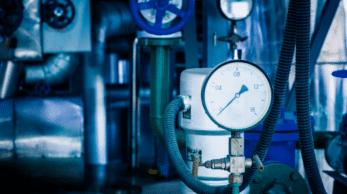FMEA: Definition and strategic implications
Definition and objectives
Failure Mode and Effects Analysis (FMEA) is a risk management tool designed to proactively identify potential failures in products or processes.
Originating in the 1940s and implemented by American military engineers, FMEA was adapted by the aerospace and automotive industry before becoming widespread in many other sectors such as healthcare, manufacturing, and energy.
Types of FMEA
There are mainly two types of FMEA:
- Design FMEA (DFMEA): Based on potential product failures during the design phase, evaluating the impact of each failure on the performance of the final product.
- Process FMEA (PFMEA): Used to analyze manufacturing and assembly processes to identify risks associated with each step of the process, focusing on failures that could affect the product quality or process safety.
The FMEA process in 8 key steps
- Assemble a Team: Gather a multidisciplinary team for a comprehensive analysis.
- Define the Scope and Collect Information: Clarify the scope of the product or process to be analyzed.

- Identify Potential Failure Modes: Recognize all the potential ways each function can fail.
- Identify the Causes and Effects of These Failures: Analyze the presumed reasons for failures and their consequences.
- Assess the Failures: Define their severity, possible causes, and current controls to determine the criticality score.
- Prioritize the Risks: Prioritize failures by criticality score (low, minor, major, and critical).
- Action Plan: Develop corrective actions for the most critical failures.
- Reassess Risks After Actions
Strategic advantages of FMEA
Rigorous application of FMEA brings numerous benefits:
- Improved reliability and quality of products/processes
- Reduced costs related to failures and reworks
- Better risk management
- Assistance in decision-making and prioritization of actions
- Capitalization of knowledge on potential failures
The increased efficiency in manufacturing and maintenance processes also translates to reduced waste and increased productivity.
Integrating FMEA into the routine of maintenance technicians
Importance for maintenance professionals
For industrial maintenance professionals, mastering FMEA is essential to ensure the reliability and safety of systems.
This tool helps develop a thorough understanding of equipment and processes, fostering a proactive rather than a reactive approach, and to prioritize maintenance interventions.
By identifying and assessing risks before they turn into costly breakdowns, technicians can make precise adjustments and maintain operational efficiency.
This method involves rigorous documentation and regular analysis, incorporating feedback to continuously refine maintenance processes.
Synergy between FMEA and CMMS
The Computerized Maintenance Management System (CMMS) plays a pivotal role alongside FMEA, by digitizing and structuring data from failure analyzes.
An effective CMMS captures and organizes this data, facilitating quick access to
Drawing on data from FMEA, the CMMS can automatically generate preventive maintenance tasks and suggest action plans based on identified risk priorities.
This allows for more strategic allocation of maintenance resources, ensuring that efforts are focused on areas more likely to have a negative impact on production. The joint use of FMEA and CMMS leads to a significant reduction in unplanned shutdowns and better planning of maintenance operations.
Predictive maintenance: the impact of IoT and AI on FMEA
Evolution towards predictive maintenance
Modern technology, especially the Internet of Things (IoT) and Artificial Intelligence (AI), enriches the potential of FMEA. With integrated sensors and advanced algorithms, IoT enables real-time monitoring of operating conditions, while AI can predict failures before they occur. This combination transforms traditional FMEA into a dynamic system that not only detects potential issues but also provides optimized solutions in real-time.

Continuous improvement with AI
AI adds a dimension to FMEA analysis by enabling continuous evaluation of data collected by IoT systems. This results in increasingly accurate predictive models that adapt and learn from each new piece of data. Thus, AI helps to refine failure predictions and optimize industrial maintenance strategies. Companies equipped with these technologies are better prepared to anticipate maintenance issues, minimizing unexpected interruptions and extending the lifespan of equipment.
In summary, FMEA stands out as an essential strategy for any organization seeking to improve the quality and reliability of its products and processes. By integrating preventive and predictive approaches, this method not only conserves resources by reducing failures and optimizing maintenance operations, but also enables businesses to stay competitive in an increasingly technology-driven and innovative industrial environment. With the assistance of IoT and AI, FMEA is evolving to become an even more powerful tool, suited to the challenges of the digital age, thereby ensuring continuous improvement and the long-term performance of industrial systems.



